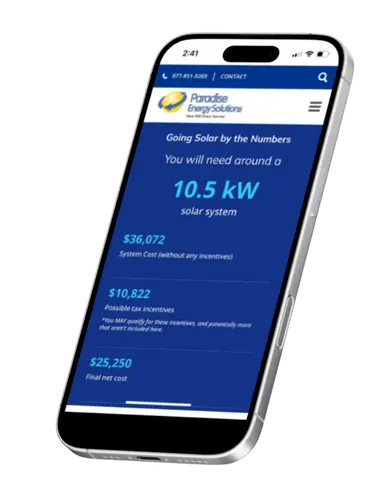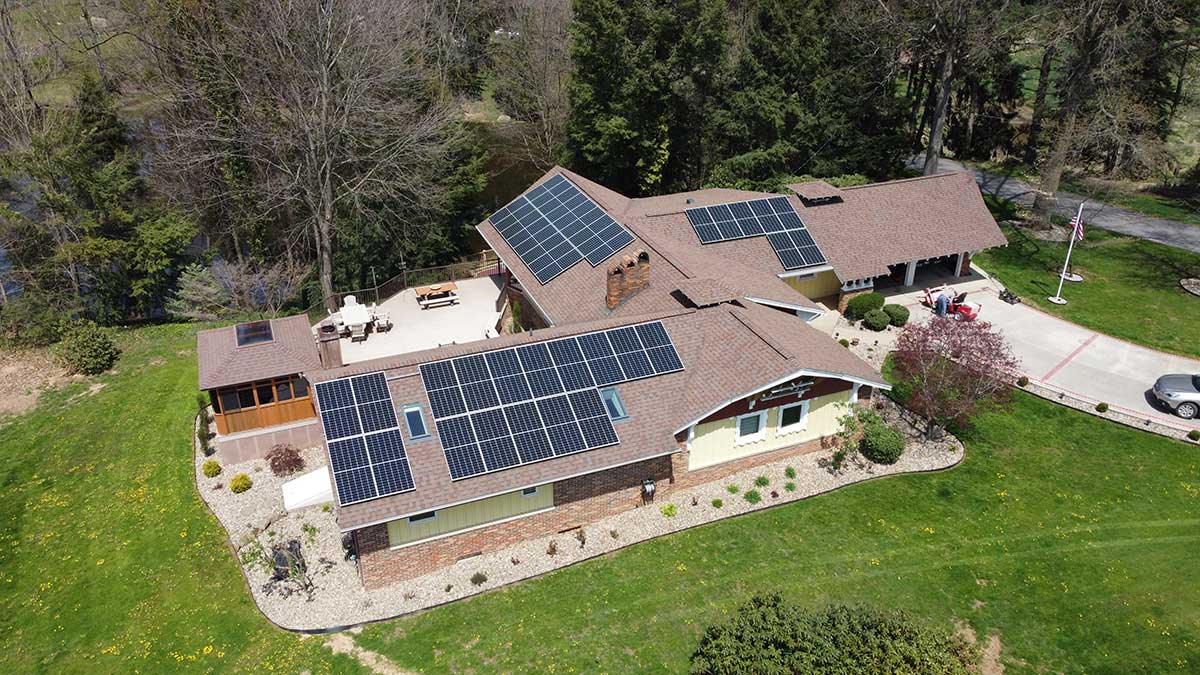Residential Solar Panel Installations
Take Control and Save Your Hard-Earned MoneyProtect Your Budget With Solar
High electricity bills aren’t just frustrating—they’re draining your household budget and leaving you exposed to rising rates. With solar, you take control.
From day one, you’ll reduce a major expense, lock in long-term savings, and enjoy the peace of mind that comes from protecting your family’s finances.
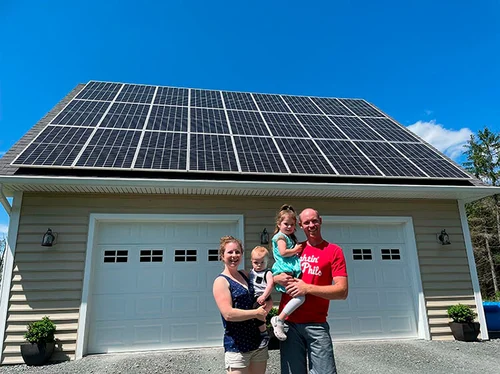
Take Control of Rising Energy Costs
Protect your Family’s Budget
Utility costs are one of the biggest hits to a household’s bottom line. Solar gives you control, stabilizing your monthly expenses and protecting your family from unpredictable rate hikes.
Save Money Right Away
Solar starts paying you back the moment it’s turned on. Lower electric bills and Solar Renewable Energy Credits (SRECs) combine to deliver immediate ROI, and keep paying you back for decades.
Guaranteed Savings
With our Triple Ten Guarantee, you can rest easy knowing your investment is protected. If your system doesn’t produce what we promised in the first 10 years, we’ll cut you a check for the difference.
Choosing the Wrong Installer Can Cost You More
- Poor Design & Subpar Workmanship
Cheap systems often underperform, cost more to maintain, and fail to deliver promised savings.
- Weak Warranties
Manufacturer warranties alone won’t protect you. Without a production guarantee and installer workmanship coverage, you’re left paying for costly repairs.
- Unreliable
Some companies disappear after installation. If your system needs support, you’re on your own, losing time, money, and peace of mind.
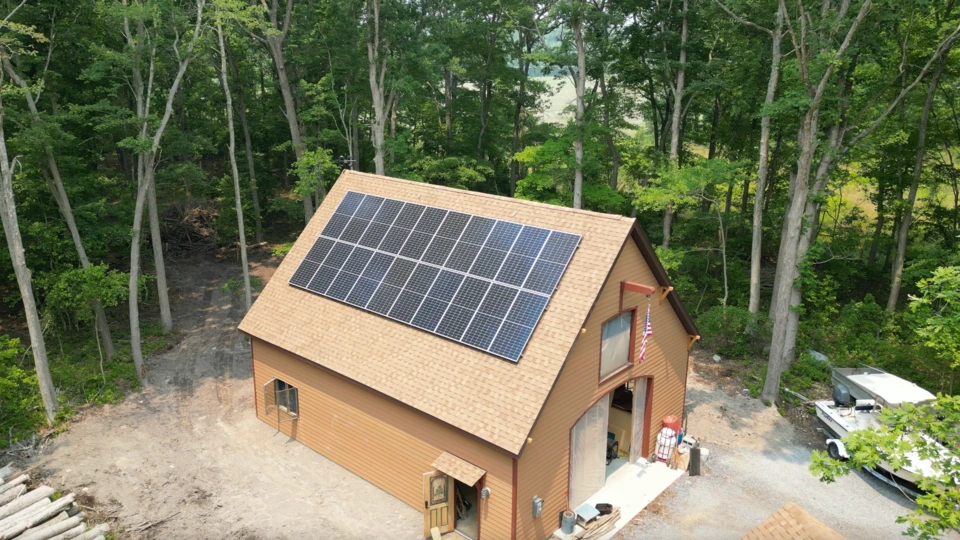
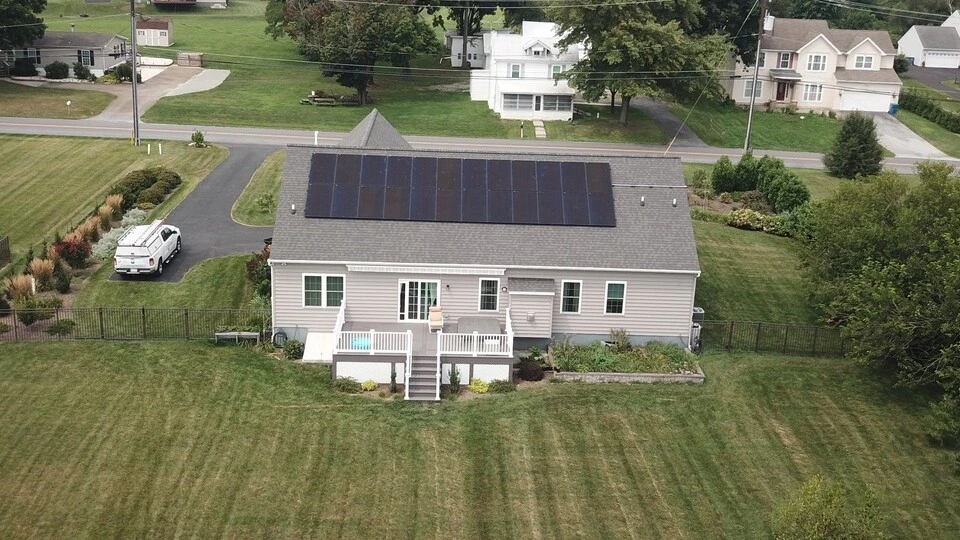
Protect Your Home Solar Investment
When you choose Paradise Energy, you’re not just buying solar panels—you’re gaining a partner invested in your long-term success.
- Smart, Custom Design
When you choose Paradise Energy, you’re not just buying solar panels—you’re gaining a partner invested in your long-term success. - Guaranteed Savings
We design every system around your home’s unique needs and your family’s goals, ensuring maximum savings and long-term performance. - A Trusted, Long-term Partner
As a family-owned, debt-free company that’s been installing solar for 16 years, we’re in this for the long haul. Our in-house service team is ready to support your system for decades.
See Why People Like You Trust Paradise Energy
Our Residential Solar Installations
Solar doesn’t have to be complicated.
Switching to solar might feel overwhelming, but with us it’s simple. We guide you through every step with clear communication and support long after your system is running.
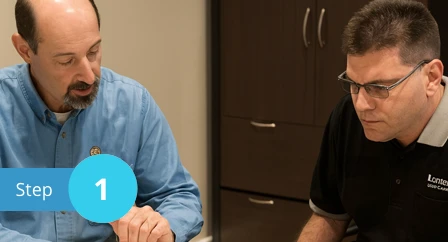
Request Your Site Visit
We’ll evaluate your home, discuss your goals, and provide a custom quote within a few days. You’ll have all the numbers and information needed to make a smart, informed solar investment.
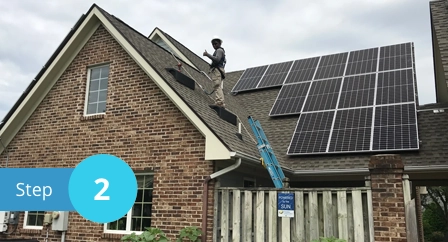
Design, Permitting, and Installation
From the initial quote to permitting, installation, and beyond, our team is here to handle every step of the process. We’ll stay in contact at every step to ensure there are no surprises.
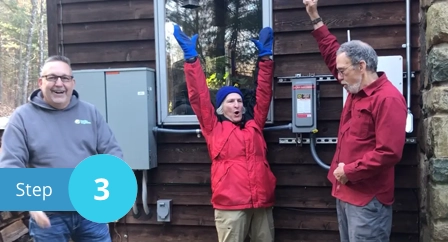
Enjoy The Savings
Once your system is energized, the payoff begins—lower bills, secure long-term savings, and a more sustainable home. From here on out, you’ll Save With Every Sunrise.
Home Solar Cost Estimates
| AVERAGE ELECTRIC BILL | SOLAR SYSTEM SIZE | COST BEFORE INCENTIVES | FEDERAL TAX CREDIT | COST AFTER INCENTIVES |
|---|---|---|---|---|
| $60 | 5 kW | $26,140 | $7,842 | $18,298 |
| $120 | 10 kW | $33,240 | $9,972 | $23,268 |
| $180 | 15 kW | $43,890 | $13,167 | $30,723 |
Frequently Asked Questions
What is Paradise Energy's service area?
Our teams from our seven local branch offices at Paradise Energy cover the mid-Atlantic region, offering solar installations and maintenance services in Delaware, Maryland, New York, Ohio, Pennsylvania, Virginia, and West Virginia.
What tax incentives are available for residential solar?
Homeowners have the opportunity to benefit from a 30% federal tax credit that can help reduce the taxes you owe. It’s important to note that this credit is not a direct payment but rather a valuable credit that can be utilized if you have sufficient tax liability.
What are Solar Renewable Energy Credits (SRECs)?
Solar Renewable Energy Credits (SRECs) are a valuable perk that often goes unnoticed by those who are new to solar energy. For every 1,000 kilowatt-hours (kWh) of solar energy their system generates, owners receive 1 SREC. These credits can then be sold in the open market, providing a source of passive income that adds to […]
Can I make money selling solar energy?
In most cases, you will not make money selling extra solar production back to your utility. However, you will be compensated for extra production through a method called net metering. Many utility companies will compensate you with electricity credits which will be used to offset the electricity you pull from the grid. Net metering regulations […]
What warranties are included with a solar system?
Solar panels come with a performance warranty that guarantees the efficiency will stay above a specified percent. These warranties range from 25 to 30 years, depending on the brand. Solar panels also come with a product warranty. These range from 12 to 25 years in length. Inverters come with a warranty of 12 to 25 […]
Do I get enough sunshine for solar panels to work?
Even when the sky is overcast, your solar panels continue to harness the sun’s energy, converting photons into electricity. While they may produce less power on cloudy days compared to sunny ones, rest assured that they are still generating free electricity for you. Research indicates that even if shadows are present, there is still enough […]
How much maintenance or upkeep is required?
PV solar systems require very little maintenance over their 30+-year lifespan. Unless your solar system has bad parts, was installed incorrectly, or an outside factor causes damage to the system, there’s little maintenance needed to keep your solar system running. Plus, if something goes wrong, there is a good chance it will be under warranty. […]
How much do solar panels cost?
There is no clear-cut answer to how much do solar panels cost without first gathering your electric usage and information from the installation site. The reason is, there are many variables to consider when installing a solar system, including how much electricity you use and need to produce, the type of installation, shading, and more. An average […]
Who is Paradise Energy Solutions?
Started in 2009, Paradise Energy Solutions is a family-owned, full-service solar energy company with the goal of helping people be good stewards of God’s abundant resources, both financial and environmental. While solar energy is what we do, our team is what makes us stand out from the rest. From the four brothers who started this […]
The Tools You Need to Go Solar with Confidence
Quickly Estimate Your Solar Price, ROI, and Savings
Wondering what solar really costs and how quickly it pays back? Our free Solar Estimator tool gives you instant answers. In just a few clicks, you’ll see a ballpark system cost, estimated savings, ROI, and payback period. No salesperson required.
